Generative Filling #1
Series of experiments to explore the aesthetic possibilities of A.I.-generated imaging methods using Robert Capa's " Loyalist Militiaman at the Moment of Death", 1936. Generative filling / filling with Adobe Firefly. (1)
…..precisely because of its cropping, as the photographer had no time to carefully select the image section in battlefield situation. It captures the decisive moment, namely that of death, the essence of war, so to speak. The documentary authenticity of the picture has been doubted since its creation, making it a prime example of the discourse of photographic authenticity.
The experimental series experiments with artificial intelligence within imaging procedures and questions the authenticity of photography using photo-historical icons that already have historical significance for the concept of documentary authenticity.
The photographic excerpt from Robert Capa’s ‘Loyalist Militiaman at the Moment of Death’ from 1936 was expanded with the help of artificial intelligence. This was done without using a prompt, only through ‘outpainting’, a generative AI technique that fills the image edge by copying neighboring pixels. The original motif is considered particularly credible because of its cropping, as the photographer supposedly had no time to carefully choose the image section. It captures the decisive moment, namely that of death, and thus essentially the essence of war. It became a symbol of the Spanish Civil War and is considered one of the most famous war photographs, yet at the same time it is also the documentary photo whose authenticity has been doubted since its inception. Thus, ‘The Falling Soldier,’ and the unclear entanglements around its creation, represent a prime example of the discourse on photographic authenticity.
In the experimental procedure with Capa’s historical recording, the AI generates parts of the image independently anew. The motif was only extended on the left side and the bottom side, hence the originally cropped motif of the soldier is now freely placed on the landscape. The AI extends the rifle and its shadow on the ground, creating an interesting shadow figure. The cropped left shoe is continued by the AI, the right implied shoe is eliminated. The generative result closely resembles the original."
© Robert Capa: “Loyalist Militiaman at the Moment of Death”, Cerro Muriano, September 5, 1936. Original frame.
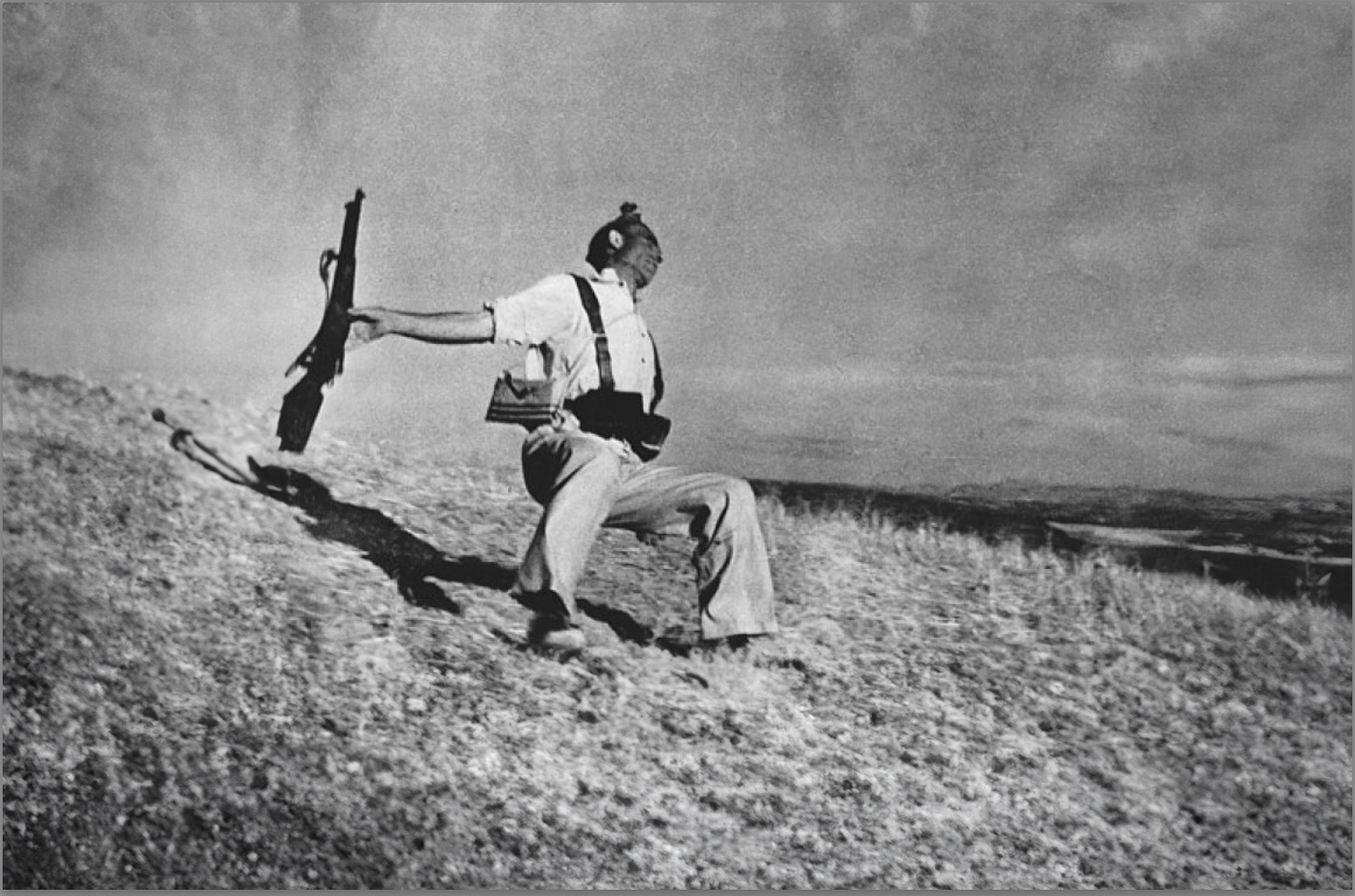
Achim Mohné: Extension of the photo with the help of AI, generative filling, outpainting, Adobe Photoshop Firefly Software, 2024.
The grayscale of the AI-generated image was finally inverted and horizontally mirrored, so that it represents a negative of the actual photo. The “negative” was transferred to a smartphone and placed in the negative holder of a conventional analog enlarger. Then a single black-and-white enlargement of the AI-generated image was made, in an analog way in the darkroom. The negative, which is actually illuminated by the enlarger and projected onto the photo paper, was replaced by the self-luminous smartphone.
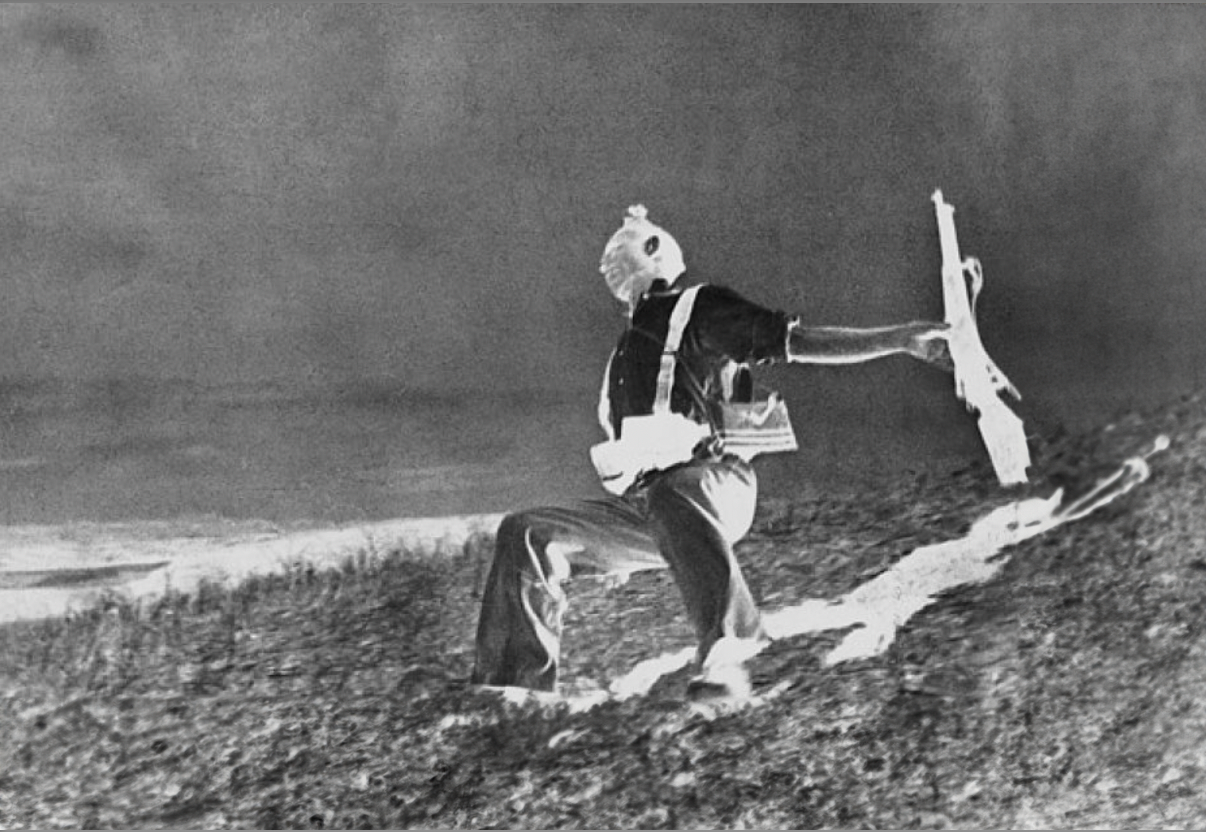
Inverted and mirrored image as a negative template in the format 24 x 36 mm.
For the analog print, old photo papers were used, which still come from a time before the use of digital photography. These papers have various defects due to long storage, which show up as streaks, graying, yellowish spots or greatly reduced contrasts. This could make the print mistaken for a vintage print.
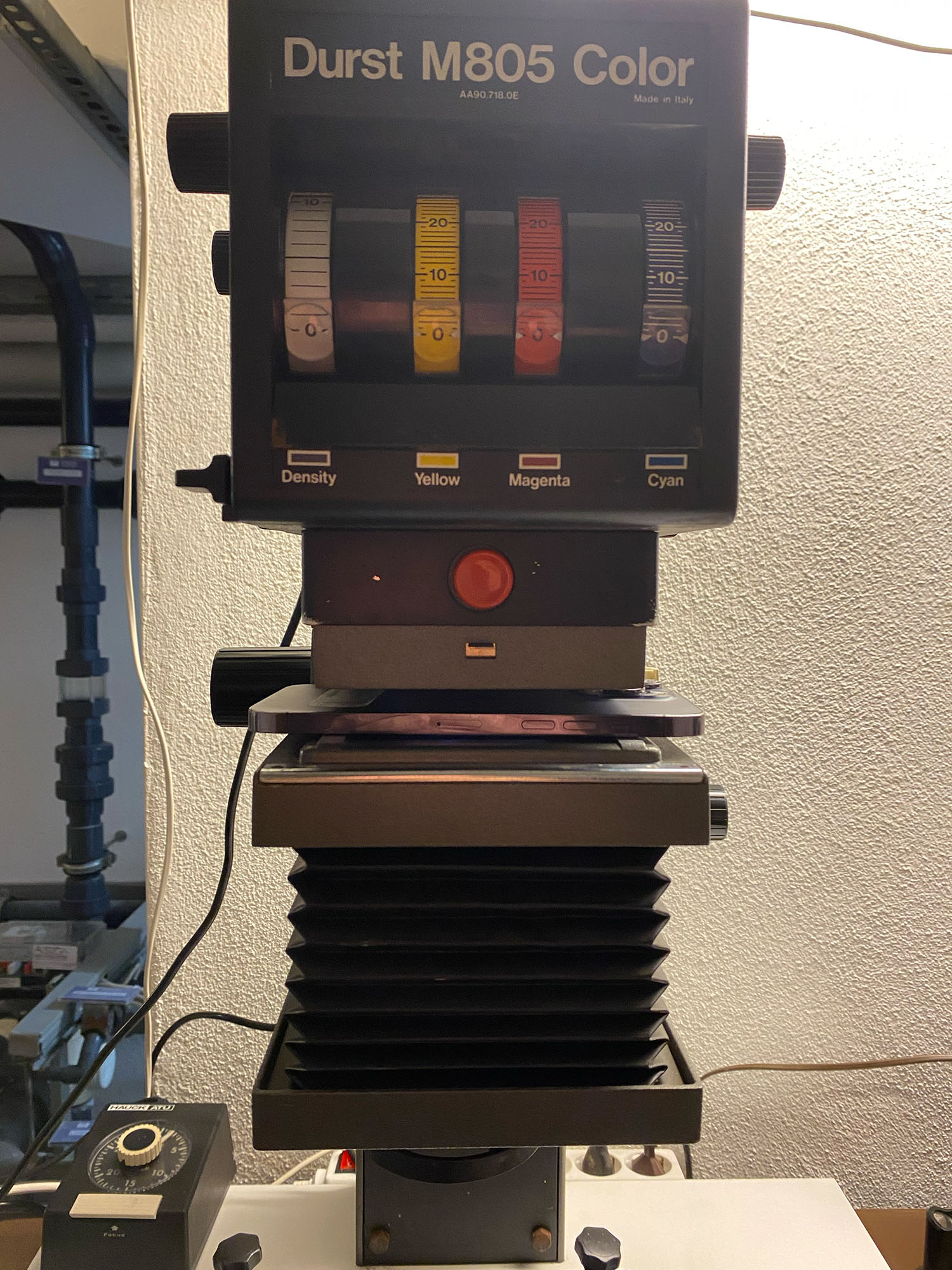
Smartphone in the analog enlarger.
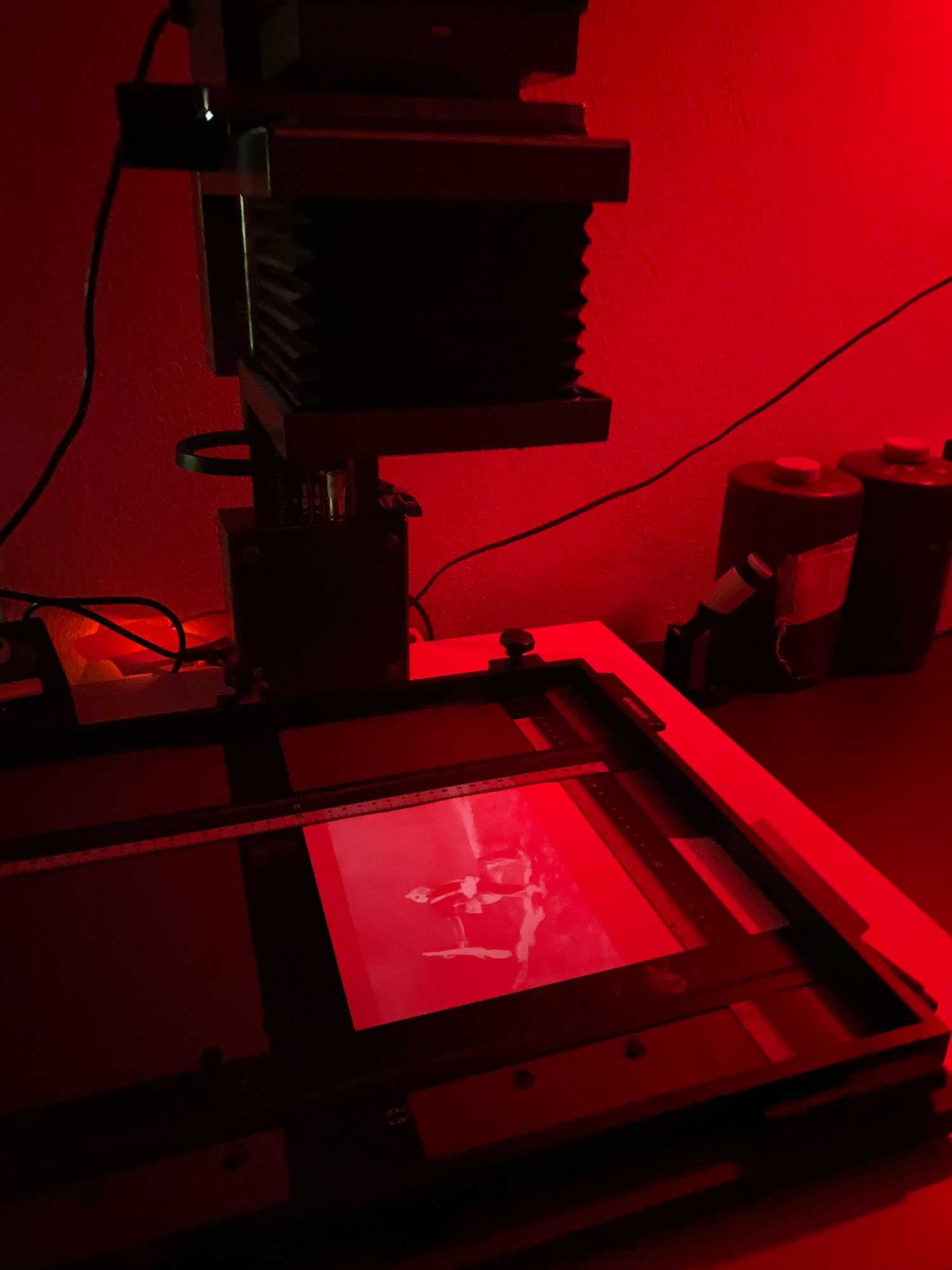
Projection of the smartphone display onto the enlarger frame.
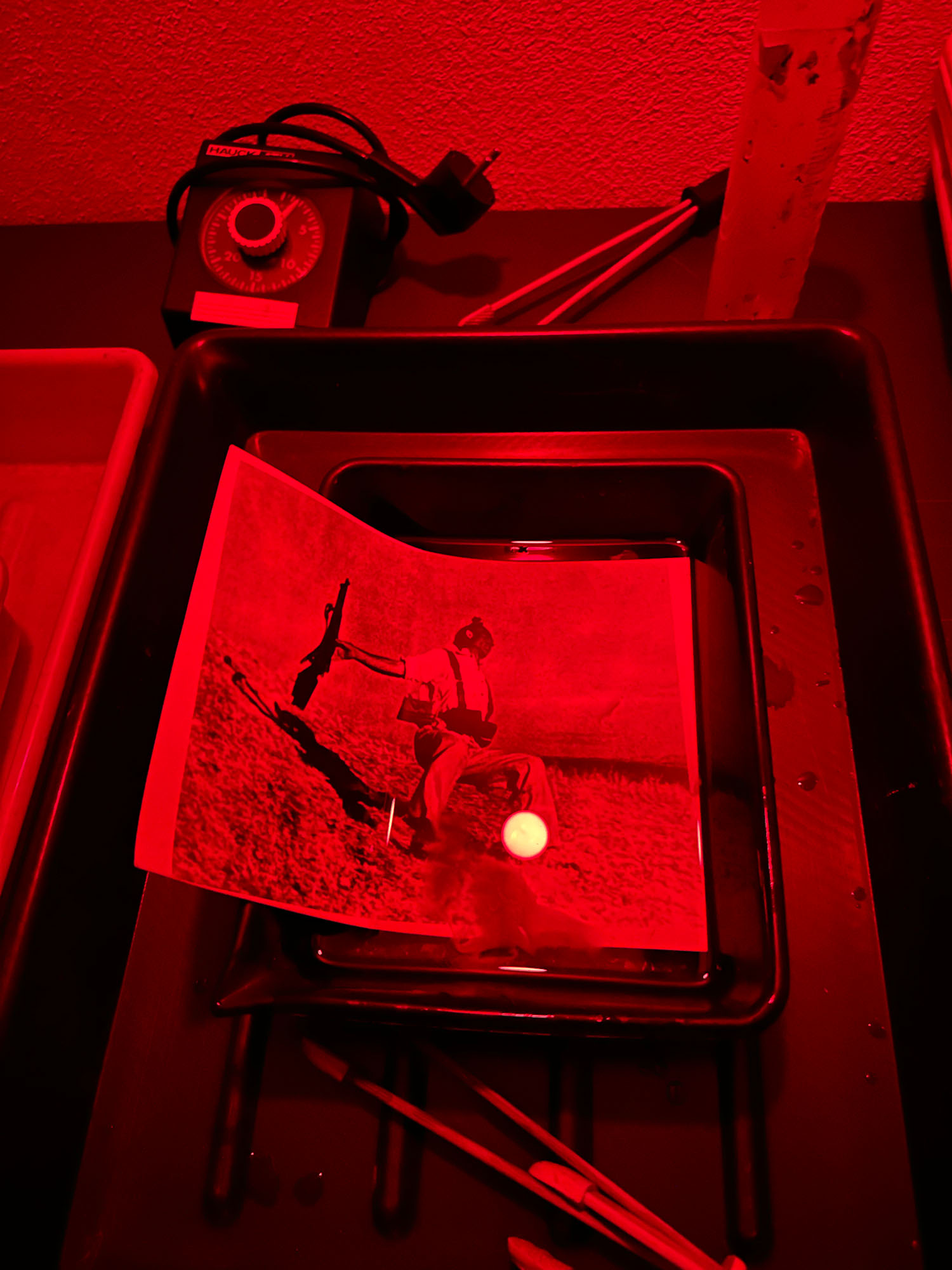 Black and white print in the fixing bath.
Black and white print in the fixing bath.
Capa’s “Falling Soldier” was already controversial in terms of its authenticity during its creation in the Spanish Civil War in the 1930s, and to this day it is not clear whether it is a staged, i.e., posed, or a documentary photo that shows the decisive moment of a soldier being shot.
Documentary photography is changing, as the manipulation of images has experienced a new dimension through artificial intelligence. Alienations, which took days in pre-digital times, could already be achieved within hours with the introduction of digital photography, while today’s AI’s generate synthetic images within a few seconds that cannot be distinguished from real photos. We are experiencing a paradigm shift from “photos can lie” to “photos lie”. Distrust of photography is no longer the exception, but the rule.

Picture in the frame, 13 x 18 cm sheet size, vintage paper, Orwo Fototechnik / DDR, circa 1980